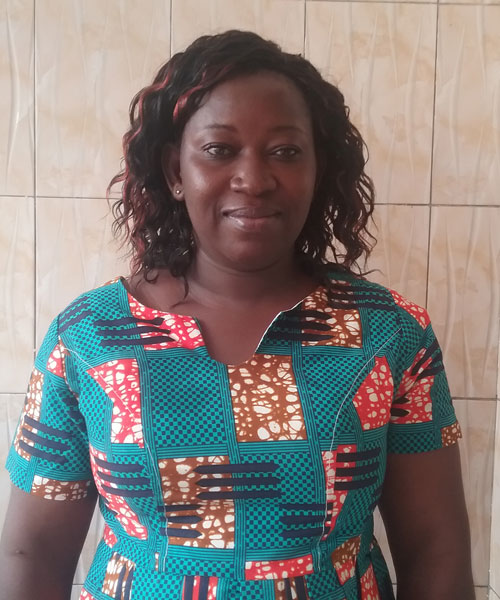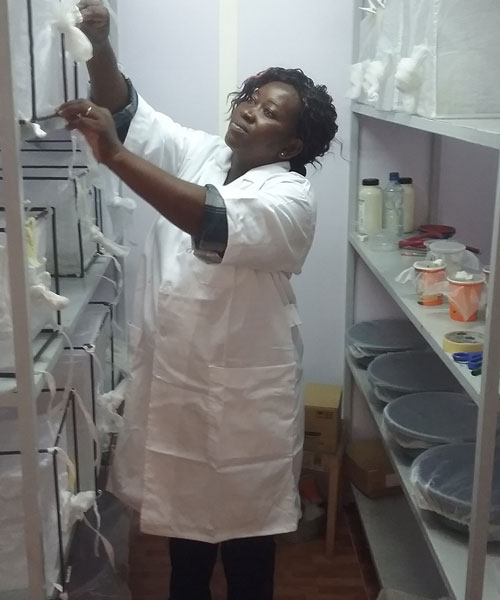Dar es Salaam, Tanzania – When sunset comes, people in Burkina Faso attend to family matters to end the day in the best possible way. For entomologist Awa Gneme, sunset is the time to start collecting these mosquitoes so that she can study their feeding and environment preferences. Many mosquitoes carry bacteria, parasites and viruses that could be bite-transferred to humans, causing debilitating diseases like malaria and dengue.
Since her school days, Awa Gneme has wanted to study malaria. It is a serious problem in Burkina Faso, accounting for 61.5% of hospitalizations and 30.5% of deaths each year. Now an assistant professor in animal biology and ecology at Ouaga University 1 Pr. Joseph Ki-Zerbo, in the capital city of Ouagadougou, she leads a project aimed at understanding if and how growing urbanisation affects mosquitoes' habitat preferences. The goal is to inform the population on how to best protect themselves from these dangerous insects.
"Changes in land use have an impact on the mosquito's abundance and community composition that deserve investigation," Gneme said at the recent TWAS Research Grants conference in Tanzania. Land use alterations – including deforestation, agricultural development, water control systems and urbanization – may affect the mosquitoes' abundance, biodiversity and human-biting behaviour.
"These insects may transmit important pathologies," she said. "Therefore it is very important to understand what environmental variables drive their living choices, and to instruct people on the best way to avoid their presence."
Gneme is the recipient of a 2015 TWAS Research Grant and one of about 30 grantees who participated in the TWAS Research Grant Conference (28-31 August 2018) in Dar es Salaam, Tanzania. The conference was organized by TWAS with funding from the Swedish International Development Cooperation Agency (Sida), and local support from the Tanzania Academy of Sciences. During the event the grantees, including Gneme, explored topics such writing a good proposal or avoiding predatory journals.
"With TWAS's help I planned a two-year project and bought equipment to set up a molecular biology laboratory, to study the genetics of mosquitoes," explained Gneme. "The equipment is now shared by all the department, with 19 researchers and more than 50 PhD and master's degree students who benefit from it."
During the conference, Gneme participated in a networking exercise aimed at connecting scientists who live across Africa. Seven colleagues – from Angola, Sudan, Togo, Kenya, Burkina Faso and the Republic of the Congo – asked to start collaborations with her.
"Funds are difficult to obtain in Burkina Faso," she said. "Our national fund committee gives about ten grants per year. But thanks to conferences like TWAS's, we get to know each other, and in the future we may get the best of our expertise and help our communities."
Add knowledge, reduce infection
Malaria is an endemic problem in Burkina Faso, with a seasonal upsurge from May to November and dusk to dawn transmission. Through the bite, female Anopheles (A. gambiae, A. arabiensis, A. funestus) mosquitoes deliver a parasite of the Plasmodium family, which completes its life cycle inside the human organism causing fever, sweating, headache, vomiting and abdominal pain. According to the Directorate for Health Statistics of the Ministry of Health, in 2015 Burkina Faso recorded nearly 8.3 million cases of malaria among its population of 18.1 million people.
"Malaria is not the only health concern," explained Gneme. "Since 2014, Burkina Faso is also experiencing dengue epidemics. But in the eye of non-experts, dengue-transmitting mosquitoes, which are from the Aedes family, look similar to those that deliver malaria. Symptoms are similar too. Hence, people tend to be treated as if they had all infected with malaria. This delays treatment for dengue."
To create a distribution map of the different mosquitoes and help doctors to make better therapeutic choices, from August 2016 to January 2017 Gneme began collecting insects. She caught more than 12,000 in areas with various degrees of human alteration – urban, peri-urban and rural settings - and carried out random samplings both outdoors, in ponds, puddles, footprints, and indoors, in rural and traditional houses. Both larvae and fed adults were collected: the first were reared in insectary until adult, while mature individuals were analysed for their blood meal.
"We visited each site three times to ensure we covered the hot dry season, the rainy season and the cold dry period," the scientist said. "But an important part of our work was meeting families in advance, to explain the purpose of our research and the impact that our study could have."
The risks and benefits of research
Mosquitoes were collected using a light-trap: In nighttime Gneme placed a light to attract the insects, then used a fan to collect them into a basket. In her lab both larvae and adults were identified, and their blood meal was also checked to identify its origin: did mosquitoes feed on humans, or animals? And what animals?
"We spotted mosquitoes of the Anopheles, Culex and also Aedes species, the latter delivering parasites that cause dengue fever," observed Gneme. "We found that many Anopheles had mainly fed on human blood (71.9%) with a minority on mixed blood from humans and animals." Most important, the study showed that about 8% of mosquitoes of the Anopheles family were infected, coming from the peri-urban area. In addition, it turned out that they had a preference for traditional houses more than for modern ones.
"The great rate of human blood meal we found inside the mosquitoes gave us an idea of the potential of malaria transmission in the city. With an infection rate of 8% that can lead to urban malaria, we must be aware that we need to monitor better the insects' distribution, and use more bed nets in peri-urban and urban areas," Gneme said.
The study shed light also on Aedes's distribution, giving a preliminary view of dengue's epidemiology. This result will contribute to improving management of this infection. Dengue has been a public health issue in the country since 2013; in 2017, 9,029 suspected, probable or confirmed cases were reported, with 18 confirmed deaths.
"Dengue is an acute disease, but if you don't really know what disease you have, you cannot manage it well," Gneme said. To underscore the disease risk – and the risk of her research – she was infected herself with both diseases.
Future plans include both research and social components. She plans molecular studies on these insects to identify more precisely the various species of bacteria and viruses that they host and that could cause sudden epidemics. And she wants to meet people in their communities to explain how to keep mosquitoes far from their houses.
Cristina Serra

